Right to Vote and Negative Voting
ABSTRACT
The Indian Electoral System has been generally observed as a case study for several reasons. The vast population, the large number of candidates. The territorial expanse of the country and the Electronic Voting machines, inter alia, make for a model of democracy that is keenly followed by critics locally and internationally. Since the first general election of 1952, there have been numerous changes in the demographics and voting patterns in India. Over the years, a number of election reforms have been proposed, Bills in this regard have been passed in Parliament and the Constitution has been repeatedly amended. The process of electioneering is thus an ever-evolving democratic process that political analysts contemplate every five years. As number of general elections is scheduled in the upcoming months, a variety of electoral debates and discussions has resurfaced. Two main debatable issues in that regard. The first issue is whether right to vote is a fundamental right or statutory right in India or not and the second one is whether the Electronic Voting Machines and/or ballot papers should have the option of ‘None of the Above’ enlisted on them. The ‘None of the above’ option is synonymous with “Negative Voting”. The Right to Vote is not an absolute right and it is subject to certain restrictions.
INTRODUCTION:
‘At rock bottom of all tributes paid to democracy is that the little man, walking into a booth, with a little pencil, making a little cross on a little bit of paper – no amount of rhetoric or voluminous discussion can possibly diminish the overwhelming importance of the point’[1]Sir Winston Churchill thus described the significance of a vote in a democratic election.
An Indian citizen aged above eighteen have a right to vote at an election during a parliamentary or assembly constituency, whose names are for the time being entered in the electoral roll of the constituency [2]Section 62(1) of the Representation of Peoples Act, 1951 . The electoral roll means the present electoral roll and as in force on the late date for making nominations in the constituency. The Supreme Court has laid down in Narendra Madivalapa Kheni vs. Manikrao Patil and Others [3]Section 62(2) of the Representation of Peoples Act, 1951, that no new can be included in, and no existing name deleted from, the roll after 3.00 pm on the last date for making nominations, in view of the embargo to that effect under section 23(3) of the Representation of the Peoples Act, 1950. Accordingly, the apex court has held that neither can any person whose name is brought onto the roll in violation of the above probation vote, nor can any person whose name was borne on the roll on the last date for making nominations, even if wrongly included, be prevented from voting unless he is suffering from any disqualification for voting. The right to vote is not absolute, but is subject to certain prescribed restrictions.
A person cannot vote, notwithstanding that, his name is entered in the electoral roll, if he is suffering from any of the disqualifications for registration as an elector under section 16 of the Act [4]Section 62(2) of the Representation of Peoples Act, 2951. No person shall vote at a general election to the House of the People or a State Legislative Assembly in more than one parliamentary constituency or, as the case may be, assembly constituency, even if his name is registered in the electoral roll of more than one such constituency. If any person votes in more than one constituency of the same class, all his votes in all the constituencies shall be void [5]Section 62(3) of the Representation of Peoples Act, 2951. Likewise, no person shall vote more than once in the same constituency, notwithstanding that his name may have been registered at more than one place in the constituency. If he/she votes, not only all his votes shall be void under section 62(4) of the Act, but he/she shall also be guilty of an offence of personation under Section 171D of the Indian Penal Code, 1860[6] Visited www.politicsonline.in and punishable with imprisonment of either description for a term extending up to one year or with fine or with both under Section 171F of the IPC [7]Rama Devi V S and Mendiratta S K, How India Votes Election Laws, Practice and Procedure, 1st Edition,Butterworths India, New Delhi, 2000. But the inclusion of name of a voter in more than one constituency or more than once in the same constituency does not by itself make his vote void; his/her votes will be void only if he/she votes more than once[8]Vikheshe Sema vs. Hokishe Sema AIR 1996 SC 1842. The ‘None of the above’ option is synonymous with ‘negative voting’ and is the option given to the electorate to elect no candidate as suitable for the position in question. Until this judgement, the right to negative voting in India existed in the form of Rule 49-O of the Conduct of Election Rules, 1961.
MEANING OF VOTE:
In A C Jose vs. Sivan Pilai and Others [9]71 ELR 23 (Ker), the expression “vote” has been defined as “Vote is the physical manifestation of the mental process signifying the choice made by the elector and the ballot refers to the means or process of recording that choice”.
MEANING OF VOTING:
In Lily Thomas vs. Speaker, Lok Sabha and Others [10](1993) 4 SCC 234, the Court elucidated the meaning of the term voting in the following words:
‘Voting is a formal action of will/opinion by the person who is entitled to exercise his/her right on the subject and issue in question. Right to Vote means right to exercise the right in favour or against the motion. Such right implies the right to remain neutral too’.
JURISPRUDENCE OF A DEMOCRACY AND THE RIGHT TO VOTE:
A Democracy is a government by the people, especially by the rule of the majority. Only in government, the supreme power is vested in the people and exercised by them directly or indirectly through a system of representation, usually involving periodically held free elections[11]https://www.merriam-webster.com/dictionary/democracy.
It is therefore imperative that people choose their representatives in Parliament. The de jure head of the State, the Prime Minister, is indirectly elected by the people of India. India is a sovereign democratic republic[12]The Preamble to the Constitution of India, reads, ‘WE, THE PEOPLE OF INDIA, having solemnly resolved to constitute India into a SOVEREIGN SOCIALIST SECULAR DEMOCRATIC REPUBLIC , and these provisions form a part of the basic structure of the Indian Constitution[13]Keshavananda Bharati vs. State of Kerala (1973) 4 SCC 225, thus making them permanent. No Act of Parliament can change this form of government in India.
One of the main arguments against the implementation of this right is that the Right to Vote is not a Fundamental Right and that the Right not to Vote, therefore, cannot be a Fundamental Right either. It is argued that being the case, this right cannot be enforced through a writ petition in the Supreme Court of India. Those making this argument point out that the Right to Vote is a statutory (as opposed to a fundamental) right provided under section 62 of the RP Act[14]Article 326: Elections to the House of the People and to the Legislative Assemblies of States to be on the Basis of adult suffrage. The elections to the House of the People and to the Legislative … Continue reading.
This was the main point of contention in the Supreme Court in the case of the People’s Union for Civil Liberties and Another vs. Union of India and Another[15](2009) 3 SCC 200. In the counter-affidavit filed on behalf of the Union of India, the very maintainability of the writ petition was questioned on the ground that the petitioners have not claimed violation of any of their Fundamental Rights as enshrined in Part III of the Constitution. The stand of the Union of India was that the right of the elector to vote is a statutory right and not a Fundamental Right and therefore, the writ petition filed under Article 32 cannot be entertained. Also, in a particular case, it was held that the right of an elector to vote does not include the right of negative voting and therefore, Rule 49-O cannot be become unconstitutional or ultra vires to the provisions of section 128 of the Act. This view was supported with reference to the case of Kuldip Nayar vs. Union of India [16]2006) 7 SCC 1wherein it was held that the “right to elect and to vote can be regarded as a statutory right available to an elector under the Act but the same cannot be treated as flowing from the right to freedom of expression as guaranteed under Article 19(1) (a) of the Constitution, 1950”.
ELECTIONS IN THE GREAT INDIAN DEMOCRACY:
India, today, is the largest democracy in the world that conducts free and fair elections[17]http://www.indembassy.org.pe/news2009/features 1 april09.pdf. Its’ been a saying that conducing general elections in India is equivalent to that of holding them for Europe, United States, Canada and Australia all put together[18]http://lawmin.nic.in/ncrwc/finalreport/vl ch4.htm . The intensity of elections in India can be seen in its numbers. It has an electorate of 714 million of which 428 million cast their votes[19] , in 8,28,804 polling stations [19]India Digest, General Elections 2009, available at http:www.hcilondon.in/indiadigest/Issue288/pdf/5.pdf, 7.2 million of which were added in 2009 itself and 8-9 million people [20]http://www.indian-elections.com/india-statistics.html, including the security forces were in charge of conducting these elections.
In 2009, as India entered its 59th year since becoming a Republic and the electorate voted in five phases to form the 15th Lok Sabha, there were 17 million voters within the age group of 18 to 35 years, an astounding figure scaling higher than the individual population of 161 countries in the world[21]http://election.rediff.com/column/2009/may/18/loksabhapoll-election-commissioner-s-y-quarishi-on-.
The first few Lok Sabha elections in India recorded some of the highest voter turn-outs, 61.2 per cent[22]www.indian-elections.com/india-Statistics.html in the first general election of 1952, 61.33 percent[23]Ibid in 1967, and finally peaking in the eighth general election of 1984 with a turn-out of 63.56 per cent. Since then, there has been a steady decline in the percentage of voter turnouts, the lowest being 48.74 per cent in the fourteenth Lok Sabha elections and ending with almost 59 per cent in the fifteenth general elections of 2009.
The Supreme Court of India, in the case of People’s Union for Civil Liberties and Another vs. Union of India and Another[24](2009) 3 SCC 200sent the matter of the proposed ‘alternative method of election’ to a Constitution bench for its analysis and judgement as the judges believed that this question, ‘…needed a clear exposition of law by a Larger Bench’ The 2013 PUCL case is an outcome of the decision on this issue by a Full bench of the Supreme Court of India.
RIGHT TO VOTE AND NEGATIVE VOTING:
The Supreme Court[25]Jyoti Basu vs. Debi Ghosal 1982 (1) SCC 691; Kuldip Nayar vs. Union of India and Others (2006) 8 SCALE 257;People’s Union for Civil Liberties and another vs. Union of India and another decided on … Continue reading has consistently held that, in our laws, the right to vote is a statutory right, not a common law right or a fundamental right. The ‘electoral right’ in our law is defined in section 79(b) of the 1951 act to mean the right of a person to stand or not to stand as, either to withdraw or not to withdraw from being, a candidate, or to vote or refrain from voting at an election. The scheme hitherto of the 1951 Act and the 1961 Rules made thereunder was that an elector who came to the polling station had to cast his vote, and where he decided not to vote for any of the candidates, he had to openly declare his intention to the presiding officer that he did not wish to vote, which disclosed his identity and violated the secrecy of his vote (Rule 41(2) and 49 O of the 1961 Rules). In other words, he could not exercise his right to refrain from voting without exposing himself and violating the secrecy of his vote. Thus, the law provided only for ‘positive voting’ in our elections.
During the course of the hearing, a question arose whether the Supreme Court could entertain the writ petition under Article 32[26]Article 32 of the Indian Constitution, 1950 deals about “Writ Jurisdiction of Supreme Court and the Division Bench hearing the matter was in doubt whether the right to vote was a facet of fundamental right as observed by a three member bench in an earlier case of People’s Unions for Civil Liberties vs. Union of India [27]2003 (4) SCC 399or a statutory right as observed by two member Bench in Jyoti Basu vs. Debi Ghosal[28]1982 (1) SCC 691. Referred Dr.K.Krishna Murthy and Others vs. Union of India and Another 2010 (5) SCJ 757 . The Divisional Bench instructed that the matter to be placed before the Chief Justice for placing it before a larger Bench. Earlier, in Lily Thomas vs. Speaker Lok Sabha and Others [29]1993 (4) SCC 234, the Supreme Court had observed, “the right to vote means the right to exercise the right in favour of or against the motion and such right implies the right to remain neutral as well”.
RIGHT TO VOTE: A NEW APPROACH:
The Supreme Court delivered the judgement on 27th September 2013 giving new definition and approach to the right to vote and the implications thereof. The bench headed by Hon’ble Chief Justice Mr. Sathasivam with two other Judges Hon’ble Mr. Justice Ranjana Prakash Desai and Hon’ble Mr. Justice Ranjan Gogoi and the Supreme Court held: “Democracy and free elections are part of the basic structure of the Indian Constitution”. In Indira Nehru Gandhi vs. RajNarain[30]1975 Supp 1 SCC 198 , Khanna, J., held that “democracy postulates that there should be periodic elections where the people should be in a position to re-elect their old representatives”. Thenceforth, the Court ingeminated that the democracy is the basic structure of the Constitution in Mohinder Singh Gill and Another vs. Chief Election Commissioner, New Delhi and Others[31]1978) 1 SCC 405, AIR 1978 SC 851 and Kihoto Hollohan vs. Zachilhu and Others [32]1992 (Supp) 2 SCC 651. For the protection of the right in terms of Section 79(d) and Rule 49-O viz., “right to vote”, the Court reiterated that the Court is competent as well within its power to issue directions regarding the secrecy of a voter who decides not to cast his/her vote to be protected in the same manner as the Statute has protected the right of a voter who decides to cast his vote in favour of a candidate. This Court is also justified in giving such directions in order to give effect to the right of expression under Article 19(1) (a) and to avoid any discrimination by directing the Election Commission to provide NOTA button in the EVMs”.
THE NOTION OF NEGATIVE VOTING:
A. The concept of negative voting:
‘Negative Voting’ is when a voter wants to cast a negative vote, that is, when the voter makes a choice to vote for none of the candidates contesting elections in his constituency. The voter, in this instance, registers a ‘negative vote’, which implies that he does not support any of the candidates listed on the ballot but still registers his vote. Along with recording his choice, the voter also protects his ballot from being misused by someone else. This has to be distinguished from a voter’s ‘right not to vote’ which means a voter refusing to exercise his franchise. This is also different form not voting at all where the voter does not come out and cast his vote, and thereby his vote gets added to the percentage of people who did not vote. The concept of ‘negative voting’ is not a new one. It is prevalent in several democracies across the world. Although it appears in different facets, it has not been implemented rigorously[33]http://www.dnaindia.com/india/report_narendra-modi-s-law-on-compulsory-voting-fails-to-enthuse-election.
B. System of negative voting:
IN INDIA: In 2009, as an epochal move, the Gujarat Assembly passed the Gujarat Local Authorities Laws (Amendment) Bill, 2009, which makes voting mandatory in local body polls in Gujarat and provides the liberty to the voters to cast their vote in favour of ‘none of the candidates contesting elections’. The rules regarding negative voting were slated to be framed at a later stage[34]http://www.indianexpress.com/news/gujarat-assembly-passes-mandatory-voting- . This was the first such legislation to be initiated country. Under this Bill, if a voter fails to exercise his franchise, the election officer will issue a notice to him seeking reasons. If a voter fails to reply within a month, or if the election officer is not satisfied with the reply, the voter will be declared a ‘defaulter voter’[35]ibid . However, this Bill also faced certain hurdles. The Governor of the State of Gujarat returned the Bill unsigned citing three main objections to the Bill. First, that compulsory voting was a violation of Article 19 of the Constitution [36]http://www.indianexpress.com/news/gujarat-govt-tables-compulsory-voting-Bill-again/678765. Second, the punishment as a consequence of failing to vote was a violation of the fundamental freedom of citizen and third, the failure to implement compulsory voting across the world[37]Ibid . However, in September 2010, the Gujarat Government tabled this Bill in the Assembly again [38]http://articles.timesofindia.indiatimes.com/2010-04-18/india/28130062_1_compulsory-voting-Gujarat-local-authorities-laws-voting-bill.
RULE 49-O OF THE CONDUCT OF ELECTION RULES, 1961:
As of now, no central legislation contains binding provisions recognising the right of ‘negative voting’. A diluted form of this right has been recognised under Section 49-O of the Conduct of Election Rules, 1961[39]Rule 49-O of the Conduct of Election Rules, 1961 reads as follows: ‘Elector deciding not to vote – If an Elector, after his electoral roll number has been duly entered in the register of voters … Continue reading .
In certain cases, it may happen that a voter at the polling station decides that he does not wish to cast his vote for any candidate that still his or her name shall be entered on the register of voters. The provision further enables a voter to record the fact that he has decided not to vote. Further, this record ensures that his vote is not misused. Hence, although the substantive right of negative voting exists as Rule 49-O [40]at http://www.indianexpress.com/news/the-power-of-negative-voting/1175466/1, it needs to be implemented. However, more importantly, Rule 49-O has a stronger persuasive value, which will play the role of making the political class aware and conscious of the required credentials that make a person eligible to be the representative of the people. Just as muscle power through recruiting criminals facing serious charges of murder, chips away at the roots of democracy, money power can also stultify the growth of a vibrant democracy [41]http://www.hindu.com/nic/elecsyst.htm.
The courts in our country have pointed out the grave consequences of permitting wealth and affluence to dominate the electoral process. In 1975, Justice Bhagwati had made a remark on this democratic process[42]Democratic process can function efficiently and effectively for the benefit of the common good and reach out the benefits of self-government to the common man only if it brings about a participatory … Continue reading.
ENFORCEMENT OF RULE 49-O OF THE CONDUCT OF THE ELECTION RULES, 1961:
The exercise of Rule 49-O would be a step in remedying this effect to the extent that it may bring about an improvement in the quality of the candidates put up for elections by political parties. Rule 49-O is thus, a tool to ensure that better quality candidates contest elections.
Indian election campaigns are fought with election symbols, flags, party manifestos and offers of several incentives to the voters. We are very often find candidates and political parties vying with each other, at the cost of blatantly breaching the Model Code of Conduct[43]http://eci.nic.in/eci_main/Model_Code_Conduct.pdf , to win votes. If Rule 49-O has to serve its purpose, the electorate needs to be made equally aware of its existence – albeit without posters, campaigns and incentives. In the light of the current demographics, the implementation of this rule may be made legal but its effectiveness cannot be guaranteed.
RIGHT NOT TO VOTE UNDER INDIAN VOTING SYSTEM:
Within the Indian voting system, there is a conflict while exercising one’s right not to vote. The Representation of The People Act, 1951 (RP Act) under section 128 provides for a secret ballot. As per the electoral provisions today, if a voter chooses not to vote, he must inform the Electoral Officer of his voting booth that he chooses not to cast a vote. By doing so, the voter loses his right to a secret ballot, which strikes at the very foundation of our democratic electoral system. The 2013 PUCL case remedies this issue wherein the judges conclude that this provision of Rule 49-O is ultra vires section 128 of the RP Act and violates Article 19(1) (a) of the Constitution of India, 1950. Apart from the issue of secrecy, Rule 49-O only allows the voter to record the exercise of his franchise as a decision not to vote. This vote does not get added to the percentage of votes polled or added to any calculations. Therefore, it is a lost vote, from which the protest that the voter actually wants to register is not visibly apparent. The exercise of such a right needed to be made clear to candidates and political parties – to show them that is what the electorate thinks of them.
The 2013 PUCL judgement thus provides the electorate the option to vote for ‘None of the above’ as an additional candidate on the Electoral Voting Machine itself, thereby making it possible to reflect the electorate’s choice.
NONE OF THE ABOVE: I VOTE FOR ‘MR NOBODY’:
A more effective device in the hands of the electorate would be the ‘None of the above’ option on the ballot[44]The poll panel has recommended to the Union Government to include ‘None of the Above’ Option in EVMs – Referred P B Joychen, ‘EC asks government to include ‘None of the Above’ … Continue reading. As adjudged by the Supreme Court in the 2013 PUCL case. Every ballot will now contain a ‘None of the above’ option signifying that the voter chooses to reject every candidate contesting the election from his/her constituency. The judgement extends only to this modification with respect to the way in which the electorate will vote in the elections held in the year 2014. It does not elaborate or identify the consequences of the ‘None of the above’ option gaining the maximum number of votes and its subsequent impact on a constituency that votes thus.
Therefore, taking this alternate method of voting further is to consider the votes cast for the ‘None of the above’ option as potentially being able to bring about immediate changes in the constituencies where this right has been exercised in the majority. The 2013 PUCL judgement explains that the outcome of the ‘None of the Above’ option will be to provide an opportunity to the elector to express his dissent/disapproval against the contesting candidates and will have the benefit of reducing bogus voting, which could thereafter, compel the political parties to nominate a sound candidate.
CONCLUSION:
Elections are the single largest exercise of democratic rights wherein citizens can actively participate. In India, the magnitude of this event arises from the fact, that there are over 700 million registered voters[45]http://eci.nic.in/eci_main/archiveofge2009/Stats/VOLI/oS_StatewiseNumberOfElectors.pdf , making it the world’s largest democracy. However, the essence of a true democracy lies in its representative character and not merely in its numerical strength. The deterioration in the quality of candidates, lack of choice, parties fielding candidates with questionable records has led to apathy among voters. In order to offer the electorate a positive alternative, the concept of negative voting should be introduced.
As the variants of the concept have been mooted by the 170th Law Commission Report and Rule 49-O, the implementation of the Law Commission Report poses a number of financial and logistical hurdles, which will further burden the exchequer. Importantly, Rule 49 – O violated a voter’s right to secrecy which was fundamental to the right to franchise. The issue was resolved in the 2013 PUCL judgement. Nonetheless, there are still several issues relating to the right to negative voting that need to be addressed. The judgement does not consider the consequences of the option of ‘None of the above’ being elected with the majority number of votes. The acceptance of this right is a positive step forward and the effects will be visible during the sixteenth general elections that are likely to take place within the next year.
There are some recommendations from the Law Commission report that can further effectively implement the right to negative voting through rule 49 – O while also simultaneously addressing their drawbacks. Therefore, the Supreme Court’s approach to ensure a voters’ right to secret ballot by including the ‘None of the above’ option on the Electronic Voting Machines is practical development.

Divya MB
5th Year, B.Com., LL.B (Hons),School Of Excellence in Law, Chennai
References
| ↑1 | Sir Winston Churchill thus described the significance of a vote in a democratic election |
|---|---|
| ↑2 | Section 62(1) of the Representation of Peoples Act, 1951 |
| ↑3 | Section 62(2) of the Representation of Peoples Act, 1951 |
| ↑4 | Section 62(2) of the Representation of Peoples Act, 2951 |
| ↑5 | Section 62(3) of the Representation of Peoples Act, 2951 |
| ↑6 | Visited www.politicsonline.in |
| ↑7 | Rama Devi V S and Mendiratta S K, How India Votes Election Laws, Practice and Procedure, 1st Edition,Butterworths India, New Delhi, 2000 |
| ↑8 | Vikheshe Sema vs. Hokishe Sema AIR 1996 SC 1842 |
| ↑9 | 71 ELR 23 (Ker |
| ↑10 | (1993) 4 SCC 234 |
| ↑11 | https://www.merriam-webster.com/dictionary/democracy |
| ↑12 | The Preamble to the Constitution of India, reads, ‘WE, THE PEOPLE OF INDIA, having solemnly resolved to constitute India into a SOVEREIGN SOCIALIST SECULAR DEMOCRATIC REPUBLIC |
| ↑13 | Keshavananda Bharati vs. State of Kerala (1973) 4 SCC 225 |
| ↑14 | Article 326: Elections to the House of the People and to the Legislative Assemblies of States to be on the Basis of adult suffrage. The elections to the House of the People and to the Legislative Assembly of every State shall be on the basis of adult suffrage; but is to say, every person who is a citizen of India and who is not less than twenty one years of age on such date as may be fixed in that behalf by or under any law made by the appropriate legislature and is not disqualified under this constitution or any law made by the appropriate Legislature on the ground of non-residence, unsoundness of mind, crime or corrupt or illegal practice, shall be entitled as a voter at any such situation |
| ↑15, ↑24 | (2009) 3 SCC 200 |
| ↑16 | 2006) 7 SCC 1 |
| ↑17 | http://www.indembassy.org.pe/news2009/features 1 april09.pdf |
| ↑18 | http://lawmin.nic.in/ncrwc/finalreport/vl ch4.htm |
| ↑19 | India Digest, General Elections 2009, available at http:www.hcilondon.in/indiadigest/Issue288/pdf/5.pdf |
| ↑20 | http://www.indian-elections.com/india-statistics.html |
| ↑21 | http://election.rediff.com/column/2009/may/18/loksabhapoll-election-commissioner-s-y-quarishi-on- |
| ↑22 | www.indian-elections.com/india-Statistics.html |
| ↑23, ↑37 | Ibid |
| ↑25 | Jyoti Basu vs. Debi Ghosal 1982 (1) SCC 691; Kuldip Nayar vs. Union of India and Others (2006) 8 SCALE 257;People’s Union for Civil Liberties and another vs. Union of India and another decided on 27 September, 2013 in Writ Petition No. 161 of 2004 |
| ↑26 | Article 32 of the Indian Constitution, 1950 deals about “Writ Jurisdiction of Supreme Court |
| ↑27 | 2003 (4) SCC 399 |
| ↑28 | 1982 (1) SCC 691. Referred Dr.K.Krishna Murthy and Others vs. Union of India and Another 2010 (5) SCJ 757 |
| ↑29 | 1993 (4) SCC 234 |
| ↑30 | 1975 Supp 1 SCC 198 |
| ↑31 | 1978) 1 SCC 405, AIR 1978 SC 851 |
| ↑32 | 1992 (Supp) 2 SCC 651 |
| ↑33 | http://www.dnaindia.com/india/report_narendra-modi-s-law-on-compulsory-voting-fails-to-enthuse-election |
| ↑34 | http://www.indianexpress.com/news/gujarat-assembly-passes-mandatory-voting- |
| ↑35 | ibid |
| ↑36 | http://www.indianexpress.com/news/gujarat-govt-tables-compulsory-voting-Bill-again/678765 |
| ↑38 | http://articles.timesofindia.indiatimes.com/2010-04-18/india/28130062_1_compulsory-voting-Gujarat-local-authorities-laws-voting-bill |
| ↑39 | Rule 49-O of the Conduct of Election Rules, 1961 reads as follows: ‘Elector deciding not to vote – If an Elector, after his electoral roll number has been duly entered in the register of voters in Form-17A and has put the signature or thumb impression thereon as required under sub-rule (1) of Rule 49L, decided not to record his vote, a remark to this effect shall be made against the said entry in Form 17A by the presiding officer and the signature or thumb impression of the elector shall be obtained against such remark |
| ↑40 | at http://www.indianexpress.com/news/the-power-of-negative-voting/1175466/1 |
| ↑41 | http://www.hindu.com/nic/elecsyst.htm |
| ↑42 | Democratic process can function efficiently and effectively for the benefit of the common good and reach out the benefits of self-government to the common man only if it brings about a participatory democracy in which every man, howsoever lowly or humble he may be, should be able to participate on a footing of equality with others’ |
| ↑43 | http://eci.nic.in/eci_main/Model_Code_Conduct.pdf |
| ↑44 | The poll panel has recommended to the Union Government to include ‘None of the Above’ Option in EVMs – Referred P B Joychen, ‘EC asks government to include ‘None of the Above’ Option in EVMs’, The Times of India (Jaipur India, 24th September, 2009), available at http://timesofindia.indiatimes.com/india/EC-asks-govt-to-include-none-of-the-above-option-in-EVMs/iplarticleshow/5048184.cms |
| ↑45 | http://eci.nic.in/eci_main/archiveofge2009/Stats/VOLI/oS_StatewiseNumberOfElectors.pdf |

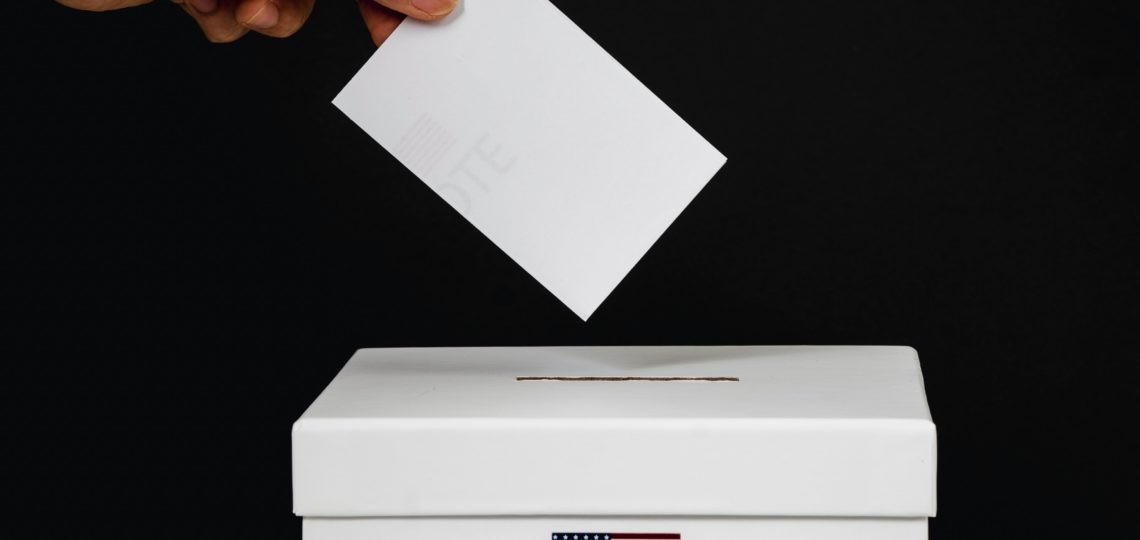
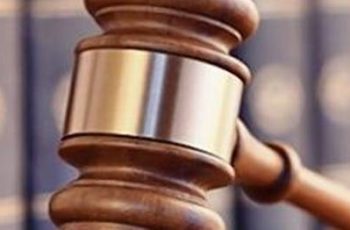

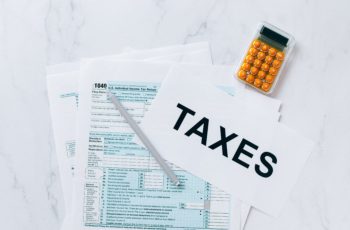
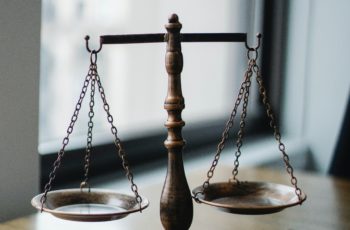



 He holds a Bachelor’s and Master’s Degree in Corporate Secretaryship and a Degree in Law. He is a Fellow member of the Institute of Company Secretaries of India and an Associate Member of the Corporate Governance Institute, UK and Ireland. He has also completed a program from ISB on ‘Value Creation through Mergers and Acquisitions.
He holds a Bachelor’s and Master’s Degree in Corporate Secretaryship and a Degree in Law. He is a Fellow member of the Institute of Company Secretaries of India and an Associate Member of the Corporate Governance Institute, UK and Ireland. He has also completed a program from ISB on ‘Value Creation through Mergers and Acquisitions.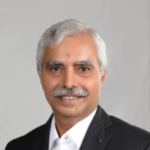 Mr P Muthusamy is an Indian Revenue Service (IRS) officer with an outstanding career of 30+ years of experience and expertise in all niche areas of Indirect Taxes covering a wide spectrum including GST, Customs, GATT Valuation, Central Excise and Foreign Trade.
Mr P Muthusamy is an Indian Revenue Service (IRS) officer with an outstanding career of 30+ years of experience and expertise in all niche areas of Indirect Taxes covering a wide spectrum including GST, Customs, GATT Valuation, Central Excise and Foreign Trade.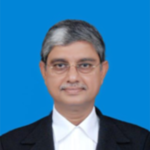 During his judicial role, he heard and decided a large number of cases, including some of the most sensitive, complicated, and high-stake matters on insolvency and bankruptcy, including many cases on resolution plans, shareholder disputes and Schemes of Amalgamation, De-mergers, restructuring etc.,
During his judicial role, he heard and decided a large number of cases, including some of the most sensitive, complicated, and high-stake matters on insolvency and bankruptcy, including many cases on resolution plans, shareholder disputes and Schemes of Amalgamation, De-mergers, restructuring etc., Ms. Sarah Abraham has been enrolled with the Bar Council of Tamil Nadu since 1998. Her areas of practice include Shareholder Disputes, Corporate Compliances, Mergers and Acquisitions, Private Equity/ Venture Capital Agreements and allied disputes, Information Technology Contracts, Intellectual Property, General Commercial Agreements, Litigation, Arbitration and Mediation.
Ms. Sarah Abraham has been enrolled with the Bar Council of Tamil Nadu since 1998. Her areas of practice include Shareholder Disputes, Corporate Compliances, Mergers and Acquisitions, Private Equity/ Venture Capital Agreements and allied disputes, Information Technology Contracts, Intellectual Property, General Commercial Agreements, Litigation, Arbitration and Mediation.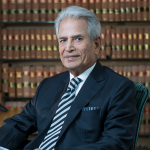 A K Mylsamy is the Founder, Managing Partner and the anchor of the firm. He holds a Degree in law and a Degree in Literature. He is enrolled with the Bar Council of Tamil Nadu.
A K Mylsamy is the Founder, Managing Partner and the anchor of the firm. He holds a Degree in law and a Degree in Literature. He is enrolled with the Bar Council of Tamil Nadu. M Subathra holds a Degree in law and a Master’s Degree in International Business Law from the University of Manchester, United Kingdom. She is enrolled with the Bar Council of Tamil Nadu.
M Subathra holds a Degree in law and a Master’s Degree in International Business Law from the University of Manchester, United Kingdom. She is enrolled with the Bar Council of Tamil Nadu.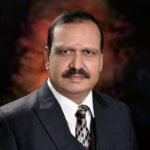 Mr. K Rajendran is a former Indian Revenue Service (IRS) officer with a distinguished service of 35 years in the Indirect Taxation Department with rich experience and expertise in the fields of Customs, Central Excise, Service Tax and GST. He possesses Master’s Degree in English literature. Prior to joining the Department, he served for the All India Radio, Coimbatore for a period of about 4 years.
Mr. K Rajendran is a former Indian Revenue Service (IRS) officer with a distinguished service of 35 years in the Indirect Taxation Department with rich experience and expertise in the fields of Customs, Central Excise, Service Tax and GST. He possesses Master’s Degree in English literature. Prior to joining the Department, he served for the All India Radio, Coimbatore for a period of about 4 years.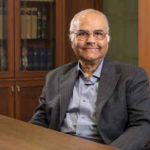 An MBA from the Indian Institute of Management, Calcutta, and an M.Sc. in Tourism Management from the Scottish Hotel School, UK, Ashok Anantram was one fo the earliest IIM graduates to enter the Indian hospitality industry. He joined India Tourism Development Corporation (ITDC) in 1970 and after a brief stint proceeded to the UK on a scholarship. On his return to India, he joined ITC Hotels Limited in 1975. Over the 30 years in this Organisation, he held senior leadership positions in Sales & Marketing and was its Vice President – Sales & Marketing. He was closely involved in decision making at the corporate level and saw the chain grow from a single hotel in 1975 to a very large multi-brand professional hospitality group.
An MBA from the Indian Institute of Management, Calcutta, and an M.Sc. in Tourism Management from the Scottish Hotel School, UK, Ashok Anantram was one fo the earliest IIM graduates to enter the Indian hospitality industry. He joined India Tourism Development Corporation (ITDC) in 1970 and after a brief stint proceeded to the UK on a scholarship. On his return to India, he joined ITC Hotels Limited in 1975. Over the 30 years in this Organisation, he held senior leadership positions in Sales & Marketing and was its Vice President – Sales & Marketing. He was closely involved in decision making at the corporate level and saw the chain grow from a single hotel in 1975 to a very large multi-brand professional hospitality group.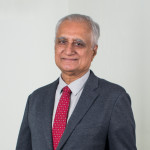 Mani holds a Bachelor Degree in Science and P.G. Diploma in Journalism and Public Relations. He has a rich and varied experience of over 4 decades in Banking, Finance, Hospitality and freelance Journalism. He began his career with Andhra Bank and had the benefit of several training programs in Banking.
Mani holds a Bachelor Degree in Science and P.G. Diploma in Journalism and Public Relations. He has a rich and varied experience of over 4 decades in Banking, Finance, Hospitality and freelance Journalism. He began his career with Andhra Bank and had the benefit of several training programs in Banking.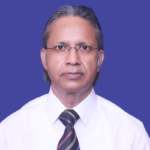 Mr. Kailash Chandra Kala joined the Department of Revenue, Ministry of Finance as ‘Customs Appraiser’ at Mumbai in the year 1993.
Mr. Kailash Chandra Kala joined the Department of Revenue, Ministry of Finance as ‘Customs Appraiser’ at Mumbai in the year 1993.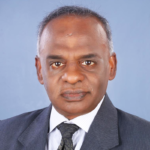
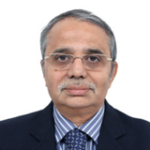 S Ramanujam, is a Chartered Accountant with over 40 years of experience and specialization in areas of Corporate Tax, Mergers or Demergers, Restructuring and Acquisitions. He worked as the Executive Vice-President, Group Taxation of the UB Group, Bangalore.
S Ramanujam, is a Chartered Accountant with over 40 years of experience and specialization in areas of Corporate Tax, Mergers or Demergers, Restructuring and Acquisitions. He worked as the Executive Vice-President, Group Taxation of the UB Group, Bangalore.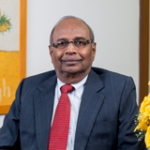 K K Balu holds a degree in B.A and B.L and is a Corporate Lawyer having over 50 years of Legal, Teaching and Judicial experience.
K K Balu holds a degree in B.A and B.L and is a Corporate Lawyer having over 50 years of Legal, Teaching and Judicial experience.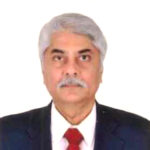 Justice M. Jaichandren hails from an illustrious family of lawyers, academics and politicians. Justice Jaichandren majored in criminology and then qualified as a lawyer by securing a gold medal. He successfully practiced in the Madras High Court and appeared in several civil, criminal, consumer, labour, administrative and debt recovery tribunals. He held office as an Advocate for the Government (Writs Side) in Chennai and was on the panel of several government organizations as senior counsel. His true passion lay in practicing Constitutional laws with focus on writs in the Madras High Court. He was appointed Judge, High Court of Madras in December 2005 and retired in February 2017.
Justice M. Jaichandren hails from an illustrious family of lawyers, academics and politicians. Justice Jaichandren majored in criminology and then qualified as a lawyer by securing a gold medal. He successfully practiced in the Madras High Court and appeared in several civil, criminal, consumer, labour, administrative and debt recovery tribunals. He held office as an Advocate for the Government (Writs Side) in Chennai and was on the panel of several government organizations as senior counsel. His true passion lay in practicing Constitutional laws with focus on writs in the Madras High Court. He was appointed Judge, High Court of Madras in December 2005 and retired in February 2017.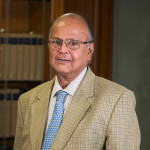 S Balasubramanian is a Commerce and Law Graduate. He is a member of the Delhi Bar Council, an associate Member of the Institute of Chartered Accountants of India, the Institute of Company Secretaries of India and Management Accountants of India.
S Balasubramanian is a Commerce and Law Graduate. He is a member of the Delhi Bar Council, an associate Member of the Institute of Chartered Accountants of India, the Institute of Company Secretaries of India and Management Accountants of India.